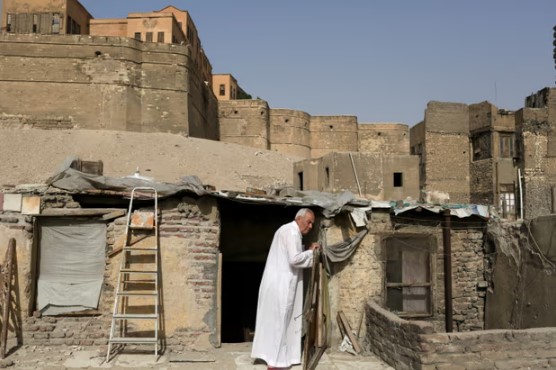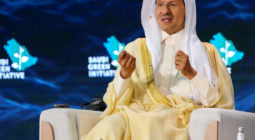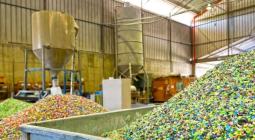Megacities in the desert: the human cost of Egypt and Saudi Arabia’s bold new projects

In their rush to claim the future and concrete over the past, these vast rebrands are demolishing people’s homes and their heritage
Spread over an area almost 7km (4 miles) long, Cairo’s Necropolis is a sprawling district of tombs, mausoleums, mosques and courtyards. Also known as the City of the Dead, it is very much alive with memories of those buried there, with the different eras of history that it traces, and with the real families who live in it and have done so, in some instances, for generations. It dates back to the seventh century, and, like so much of historic Cairo, has always existed in an almost dizzying proximity with modernity. Billboards, construction and heavy traffic rub shoulders with the silent tombs of intricate mosaics, ancient wooden doors and hallowed spaces of mourning and remembrance. Buried there are not just ancient kings and dignitaries but more contemporary politicians, celebrities and Cairenes who passed in recent decades.
Their slumber is now an uneasy one. In 2020, authorities began demolishing parts of the city to make way for an expressway. In the years since, the threat of further demolition has hung over the rest of the city. Hussein Omar’s mother, as well as some eight generations of his family, are buried there, and he hoped one day to lie next to them. He tells me that for years his family has been in deadlock with the state over what rights they have to visit, but that has now escalated, as the graves themselves have come under threat of removal. “The Egyptian state has always wanted to control histories,” he says, but in more recent times, there has been what appears to be a “deliberate targeting” in which “the attempts to erase history are part and parcel of attempts to overwrite people’s claims to property rights over what are clearly historic plots of valuable real estate”.

It is a face-off that symbolises the challenges of a wider city that in recent times has seen a hectic construction of a “new Cairo”. Most notable among these projects is a new administrative capital to the east of the city, the site of a presidential palace, government buildings and residences, to which the major functions of the Egyptian state and diplomatic community are to be decamped. A gigantic Astroturfed district with artificial lakes, technology hubs and Africa’s tallest building, the new capital’s design ethos draws on Egypt’s pharaonic past, featuring a crystal pyramid and motifs inspired by ancient Egyptian gods. It is the apogee of a remodelled Cairo that already rings the city as it expands into compounds, villas and entire new neighbourhoods, linked via new highways, that increasingly house Cairo’s large middle-class population. With names such as “Beverly Hills” and “Hyde Park”, the newbuild’s aesthetic is a sort of Dubai-meets-Miami hybrid, all glass and angles and tidy, cookie-cutter portions of lawn.
On an urban planner’s paper, it is sort of impressive. A city groaning under a large population, and historically concentrated in a few areas in downtown and old Cairo stretching along the Nile river, has expanded into the desert and modernised. But with that, history, antiquity, green spaces and people’s rights to land and memories are being sacrificed, as the soul of the city itself seems to decamp towards the new buildings on its outskirts. In haste, places such as the City of the Dead become not repositories of precious heritage and sacred burial ground, but inconveniently located obstacles to the highways that need to be built.
But it’s not all a crude but well-intentioned dash to the future. It is also a rebuking of the past. The shadow of the 2011 revolution still looms large, and even though its goals didn’t come to be, the remnants of its physical and psychological infrastructure remain, barriers to a political future where the possibility of uprising is foreclosed. And so Tahrir Square, the green centre of the protests, where people would gather, loiter and picnic, has been vacated and filled with concrete and smooth granite, with pharaonic antiquities at the centre and security guards on the periphery.
This “pharaonic futurist” aesthetic, Hussein tells me, and the sterile, easily policed spaces that are replacing parks and public areas, are there to prevent nostalgia. There is a desire, he says, “to stamp out symbols of a more pluralistic liberal age. A jingoistic attempt to invent a genealogy for the contemporary Egyptian state and people, all the while demolishing and effacing any real genealogy to which people have any affective ties.” It is “a castrating move”; a projection of the national identity that is dictated by the state, one with a vast ecological and historical fallout, as well as high financial cost. This, while Egypt’s economy is in crisis, in large part attributable to the borrowing required to fund what have been called white elephant projects.
There is no more transparently profligate projection of an invented national story than that in another vast, ambitious city, one that is being erected in the north-west of Saudi Arabia. Neom is Saudi’s rebranding in physical form. A place that in its slick models and PR campaigns looks like something that would be rendered on another planet in a science fiction movie. At 170km (105 miles) long, Neom is a narrow strip, mirrored on each side and taller than the Empire State building. Its inhabitants will be enclosed in a managed climate that will be temperate at all times, with its own fauna and flora and a giant artificial moon. The designs, Saudi’s Mohamed bin Salman said, “will challenge the traditional flat, horizontal cities and create a model for nature preservation and enhanced human livability”.
The buzz themes are the same, and all pay lip service to an idea of “modernity” that scrapes the symbols of nationhood and then packages them in notions about energy efficiency, innovation, high tech and sustainability. Neom, the project’s PR materials tell us, will be built on “care, curiosity, diversity, passion, respect and becoming a catalyst for change”. It is an expensive and ecologically costly repositioning of Saudi Arabia as a country that is under new management, and a more socially liberal order, if not a more liberal political one. The extrajudicial killings of dissidents, dispossession and persecution of those with land claims, and record group executions will continue. But they will be easier to swallow for global investors and professionals if they do so in a place that has adopted their lingua franca and afforded them the necessary legal exemptions from laws that apply only to locals and migrant labourers. Consultants, architects, and PR firms have already eagerly signed up to build and promote Saudi’s city of the future.
The difference between such Gulf projects and others in Egypt is that these landgrabs and makeovers only become viable when there is a large system of subsidies that wealthy governments can fund to purchase consent. Repression without patronage can only go so far.
Last week, after weeks of increasingly rare public protests, demolitions in the City of the Dead were quietly halted, even though strict restrictions on visitation and entry remain. As the needs of new megacities become more pressing, it is hard to imagine that this is anything more promising than a delay. But there is something too visceral, too on the nose about being forced to dig up the bodies of the dead, and the tombs that have housed them for centuries, that might make authorities think twice. In hoping to exorcise the ghosts of the past, one may end up raising them instead.
-
Nesrine Malik is a Guardian columnist
Photograph: Khaled Elfiqi/EPA - Ancient cemeteries in Cairo’s City of the Dead have been demolished to make way for a new highway.





